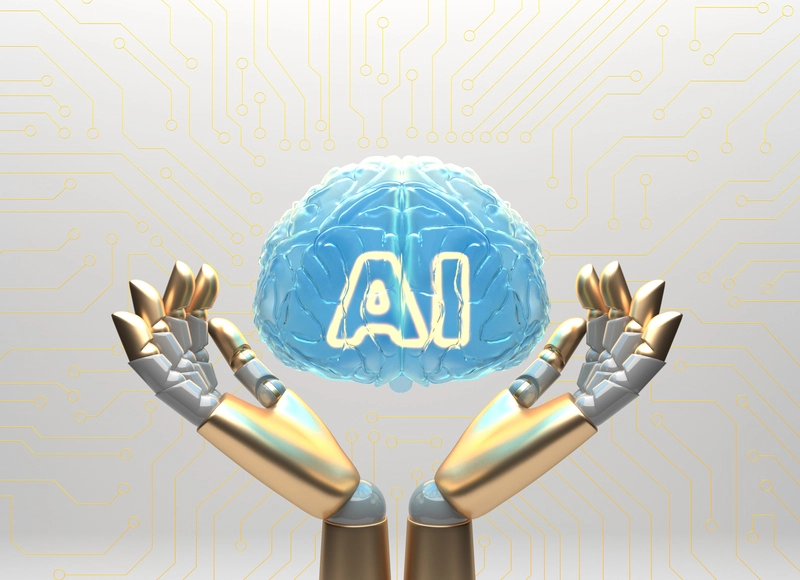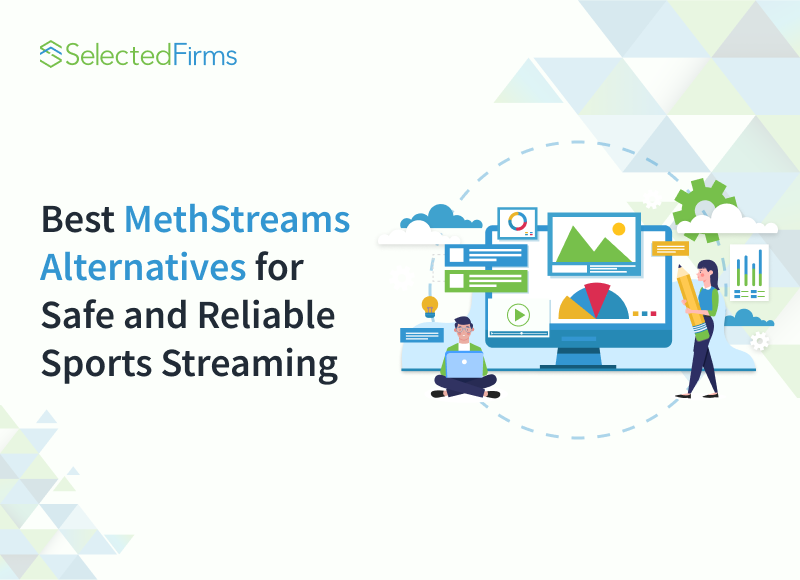Table of Contents
Unlock the potential of your business with our Generative AI Integration solution. Transform hype into tangible results as you harness cutting-edge technology to streamline operations, enhance customer experiences, and drive measurable growth.

Listen to the riddle. Your developers drown in data streams they never built, customers demand insights your systems weren't designed to provide, and competitors release features in days that would take your team months to replicate.
The whispers grow louder in boardrooms about replacing your tech stack despite the astronomical cost and guaranteed disruption. What solution preserves your existing infrastructure while rapidly closing these capability gaps?
ROI Doesn’t Lie—GenAI Knows Why
Boston Consulting Group emphasizes that leading companies allocate over 80% of their AI investments to transforming key functions and developing new offerings, rather than limiting efforts to productivity enhancements. These leaders focus on a few AI initiatives, scaling them effectively, and anticipate generating 2.1 times greater ROI than their peers.
Generative AI development company accelerates this transformation by enabling the automation of creative and cognitive tasks—like content generation, code development, customer interaction, and strategic planning—pushing AI’s role beyond efficiency into innovation and new business value.
What Generative AI Integration Actually Means?
You've got a system. It works. It pulls in data, does something useful, and helps your people make decisions. It could be a maintenance platform for field equipment. Maybe it's an internal tool to manage loyalty programs, refunds, or logistics. It doesn't matter. The setup is: data in, decisions out.
Generative AI integration just means plugging in a piece of technology that can take that data and generate something new—text, suggestions, actions, forecasts. Automatically. Based on patterns in your real data.
It doesn’t replace your team. No, it won’t magically “transform your business.” But it will save time and reduce repetitive work. And in the right places, it will give your people a faster way to deal with complexity.
Where It’s Useful
- GenAI can write the first draft if the support team spends hours writing the same refund explanations.
- It can auto-generate summaries based on CRM data if sales reps log customer notes manually.
- If your platform delivers dashboards, GenAI can add narratives explaining the numbers.
- GenAI can help deliver it without burning out developers if your users expect hyper-personalization at scale.
What You Don’t Get
- No silver bullets. If your data is a mess, GenAI won’t fix it.
- No plug-and-play miracles. Integration means actual work—APIs, security, edge cases, testing.
- No complete automation fantasy. You’ll still need people in the loop.
Why It’s Worth Considering
As your business scales, so does its complexity. The number of support tickets. The amount of operational noise. There is pressure to make more decisions faster and with less. GenAI helps with that—if you use it where it makes sense.
Working integrations make a platform more useful to those who rely on it. If internal systems are already doing the heavy lifting, GenAI simply complements them without disrupting the architecture or sidelining developers.
How Generative AI Integration Drives ROI
Let's picture this as a sequence of outcomes of interrelated decisions: from system → to workflow → to measurable return.
1. Inefficiency is Already a Cost
- Repetitive tasks eat up time from skilled employees.
- Manual reporting slows decision-making.
- Customer support remains inconsistent.
- Data accumulates faster than it can be processed.
2. GenAI Automates the Repeatable Parts
Wherever structured input leads to predictable output—summaries, emails, insights, content—GenAI integrates through APIs, operates inside the existing infrastructure, and uses internal data to generate output without requiring a platform change.
3. Time Is Recovered, and Error Rates Drop
- Tasks that took 30 minutes now take 5.
- Agents edit AI-drafted replies instead of writing from scratch.
- Analysts receive structured summaries instead of combing through raw data.
- Fewer manual steps mean fewer mistakes.
- Backlogs shrink. Burnout lowers.
4. Operational Speed Increases
- Reporting cycles shorten.
- Customer responses accelerate.
- Internal processes move faster from input to action.
5. Capacity Grows Without Headcount
- Baseline tasks are handled by automation.
- People focus on edge cases, exceptions, and oversight.
- Systems scale without proportionally increasing labor costs.
6. Return on Investment Emerges
- Time saved becomes cost savings.
- Faster delivery unlocks revenue sooner.
- Smaller teams handle larger loads with less friction.
7. Integration Stays Lightweight
- There’s no overhaul.
- No replacement of core systems.
- Just targeted microservices slotted into workflows already in use.
8. The ROI Is Operational, Not Hypothetical
Efficiency increases. Complexity decreases. Results compound quietly over time through cleaner processes, faster execution, and fewer avoidable costs.
Industries Well-Suited for Generative AI Integration
In the matrix, "Industry fit" refers to how well a specific sector's needs align with what generative AI can solve. "Business need" addresses the industry's core challenges, such as inefficiency, personalization demands, or cost reduction.
"Technical fit" evaluates whether the industry's existing data and systems are structured for the smooth integration of generative AI, ultimately enabling specific use cases like automation, content generation, or reporting.
|
|
|
|
SaaS & Digital Products |
Deliver more with the same team |
Clean APIs, modular systems |
Summaries, onboarding, changelogs |
Retail & eCommerce |
Personalize at scale, cut support costs |
Structured product & customer data |
Product texts, chat replies, loyalty content |
Logistics & Maintenance |
Downtime + slow reporting = losses |
Consistent sensor & workflow data |
Logs, route summaries, suggested actions |
Fintech & Insurance |
High compliance load, paperwork drain |
Structured financial forms & logs |
Claims, compliance drafts, and user summaries |
Customer Support |
Rising tickets, the team can't scale |
Tagged, repetitive interactions |
Draft replies, ticket sorting, and fast FAQs |
Utilities & Field Ops |
High cost of error and delay |
Diagnostic + service data is structured |
Reports, diagnostics, regulator comms |
Internal B2B Tools (ERP, CRM, etc.) |
Internal bottlenecks kill delivery speed |
Table-based workflows, predictable flows |
Report drafts, activity summaries, internal prompts |
Industries with clear workflows and data-rich environments are more suited for AI. In contrast, those that rely on complex decision-making or custom service offerings may need to hold off or integrate more cautiously with the assistance of a Generative AI development company.
Generative AI—Why It’s Everywhere You Need It
Flexibility of Output:
Generative AI isn’t tied to just one task; it can produce everything from text and images to code and data. That means it can be plugged into various parts of a business, whether for creating content, automating customer support, or generating insights for product management.
Structured Data Accessibility:
As businesses collect more organized data—think transaction logs, customer queries, and product details — generative AI becomes an ideal tool for automating repetitive tasks, summarizing data, and offering actionable insights. Many companies already have the foundation to make this integration seamless.
Natural Language Processing (NLP):
Recent advances in NLP allow AI to grasp, generate, and summarize human language effectively. This is particularly useful in customer service, finance, healthcare, and legal services, where communication plays a major role in day-to-day operations.
APIs and Microservices:
Generative AI doesn’t require a complete system overhaul. With APIs and microservices, it enhances automation, content creation, and decision-making without disrupting the current tech stack.
Scalable Benefits:
Once implemented, generative AI can take over tasks requiring many people, reducing operational costs and boosting efficiency. This allows businesses to scale quickly without the proportional increase in labor.
Key Generative AI Integration Solutions
These solutions focus on addressing a specific business need through generative AI technology. They can work together—for instance, model personalization can drive predictive analytics, and task automation can be part of infrastructure integration.
1. AI Customization
What: Adjusting AI models to fit how a business works, not the generic version. That might mean tweaking or training a model’s behavior with company-specific data.
Why: Off-the-shelf models aren’t built for your workflows. Customization makes them valuable. It raises accuracy and relevance, which directly improves results.
Example: An LLM that understands an industry’s language or a product recommender tuned to your catalog and customer behavior.
2. Infrastructure Integration
What: Plugging AI into existing systems—like CRM, ERP, or internal platforms—using APIs or microservices.
Why: No one wants to rip out their entire tech stack. Good integration lets AI do its job without breaking what’s already working.
Example: Connect AI to your CRM to automate lead scoring or fill in missing fields without human input.
3. Model Personalization
What: Fine-tuning AI models to individual users or business contexts using historical data, usage patterns, or behavior signals.
Why: One-size-fits-all models perform poorly in specific use cases. Hyper-personalization drives better decisions and sharper user experiences.
Example: A personalized product feed in an e-commerce app based on what each user browses, buys, or ignores.
4. Task Automation
What: Using AI to take over repetitive, structured tasks—things like writing responses, generating reports, or categorizing data.
Why: Cuts manual workload. Reduces errors. Speeds things up. And frees people to do more valuable work.
Example: Automatically drafting email responses or filling out weekly reports using real-time operational data.
5. Predictive Analytics
What: Using AI to spot patterns in past data to make solid guesses about what’s coming next.
Why: It shifts businesses from reacting to predicting. That helps with planning, risk reduction, and better timing.
Example: Forecasting sales next quarter or identifying which customers are about to churn so teams can step in early.
The Case: More Power Doesn’t Mean Less Work
A mid-sized publishing company integrated generative AI to streamline content creation. The goal was clear: cut down writers' time drafting articles, product blurbs, and marketing content.
It worked—almost too well.
AI started pumping out drafts at ten times the original pace. But instead of freeing up human time, it overloaded editors. The bottleneck shifted. Too much content and insufficient time (or people) to review, fact-check, rewrite, or align it with the brand tone.
What was supposed to reduce workload created more of it, just in a different place.
So, the company had to rethink the entire pipeline: bring in tools for AI-guided editorial triage, retrain staff for review-focused roles, and slow down the generation process. Productivity didn't drop, but it didn't skyrocket either. What changed was the clarity: they now understood exactly where AI fits and where it doesn't.
The case illustrates what happens when the focus is solely on output volume, rather than the entire workflow. Generative AI can produce faster than humans ever could, but if there's no system to handle that speed, review, quality control, and governance, it creates a new kind of operational drag.
Organizations Restructure to Harness GenAI Value
GenAI has transformed how businesses work, according to McKinsey's latest findings. Their research shows that most companies now incorporate AI into their daily operations, with larger firms taking bold steps to reshape their practices.
Teams are rethinking how work gets done, setting more explicit rules, and finding innovative ways to handle risks. Three out of four organizations say they've brought AI into at least one part of their business. There was just one problem. Generative AI and businesses that encourage innovation are great on their own. But they needed to be connected somehow. That's what generative AI integration did.
Now, Artificial intelligence can be easily used to conduct business like a human.
Recent Blogs
12 Best MethStreams Alternatives for Safe and Reliable Sports Streaming in 2026
-
18 Dec 2025
-
12 Min
-
36
Real World Digital Transformation Use Cases in Real Estate, Tech, and Recruiting
-
17 Dec 2025
-
6 Min
-
143








